Site Selection - Part Three
First, let me start this off by thanking the voters for electing me to Team Retail. I'm looking forward to working with this excellent collection of colleagues to make GAMA as valuable as we can make it for Retailers, not just GAMA Expo, but throughout the year.
Now, let's talk about site visits!
After two years, the Site Selection Committee (hereafter never typing all of that again), the SSC set our schedule for site visits. The rough schedule looked something like this:
Monday - Baltimore
Tuesday - Baltimore, then Chicago.
Wednesday - Chicago
Thursday - Breakfast in Chicago, then Minneapolis.
Friday - Minneapolis, then home.
Four people traveled to all three sites; John Stacy, Aldo Ghiozzi, Andrew Zorowitz, and myself. It was a neat mix, as it gave us GAMA staff to look at what GAMA needs, a member of the board for the wholesale division (and chair of the committee), a publisher and sponsor for GAMA Expo, and a longtime retailer. It was not just the four of those, we were joined in each city by other people, including folks able to provide a local perspective in each city. Neil Goldberg was on the visits in Baltimore and Chicago, Kari Bakken and Cody Romano (local) joining us in Chicago, and Rhonda and Joe Becker (sort of locals) joining us in Minneapolis. In Baltimore our local flavor contact was Dan Hoffman, who even got the tour bus to swing us by his store (we just waved, no time to stop), and for one day in MSP we were joined by Colton from Asmodee.
It was really a great cross-section of the industry making visits, but it also was an almost mind-boggling lesson in humility. Andrew has made me piles and piles of money over the last five or six years, Foam Brain Games dice are like tiny little containers of crack to my customers, so I knew Andrew made cool shit. I had absolutely no idea the amount of knowledge about convention rattling around there (which makes sense really, because Foam Brain was first a convention retail company, and they've done several thousand of them). John S and Andrew were there to make sure that the convention would be great. Aldo and I were there to drink wine and make sure the convention would be a great time. :)
So the entire week begins in Baltimore (for me that meant a flight from Chicago to Baltimore, as Chicago is where I'm spending some time these days). In all three cities we did pretty much the same thing; eat at some restaurants (and in some hotels), visit each convention center, talk to the convention center/visit bureau, explore a little bit of the town to get an idea of what was good there.
I ultimately judged each of these places on a variety of criteria that are mine and mine alone. During this third part this series we're going to talk about what those criteria were, and how they fit into the search process.
To begin we will talk about the contracts. In Baltimore and Minneapolis the contracts are five years long, and all the dates are in April of each year. In Baltimore they are late April dates, with one show spilling over into early May, and in Minneapolis they are mostly early to mid April (with one show occurring the last week of April). The Chicago proposal is two shows in late February, that spill into early March, and one show in mid-April (2030, the last show of the contract). As much as I despise Louisville I find the weather mostly enjoyable, and never wore anything warmer than a hoodie during the show this year. As someone spending a lot of time near Chicago these days, I have to be honest and tell you that Chicago in February is not a place I love, it's bitter cold too often, and even leaving my bed can be a challenge. These dates are a serious negative (for me) for Chicago.
Let's move on to hotels! I find the beds at the Galt to be terrible. My bed this year was a hill, if I moved off the center of it even a few centimeters I rolled down the hill and landed on the night stand, or the floor. The lighting in my room was like some sort of weird broken mood lighting, the front room very dark, and the bedroom strangely too bright, even with the draperies closed (love the bright red light outside my room and the way it has a phenomenal view of a parking garage).
In Baltimore we would be spread across five hotels; Hilton Inner Harbor, Hyatt Regency, Baltimore Marriott, Lord Baltimore, and Days Inn. This is a negative to me, because I like the old campus feel we had in Reno, but this is a positive to me because it provides a variety of options across brand loyalties and price points. You know how many nights I spend each year in a Wyndham property? Just the ones at Galt, but I'm Gold with Hilton and Marriott and would prefer those places. The Hilton Inner Harbor is the host hotel and I love it, already have my room picked out, and it has a sweet view. The Lord Baltimore is absolutely grand old beauty of an historic hotel, stunning crown molding, beautiful ballrooms, adorned in stellar (and rotating) art. It's a credit to the city, and I would stay there if I wanted to walk two blocks to the convention center every day. The original proposals we were sent made these the most expensive hotels we were offered, with the lease expensive property being $220 plus tax, and the most expensive being $239 plus tax (in year one, with annual escalators). This does not include the Days Inn, which did not have room rates at the time, and some of the escalators in this contract (originally) were scary; $239 to $279 over 5 years at Hilton, and $229 to $278 at Hyatt in five years.
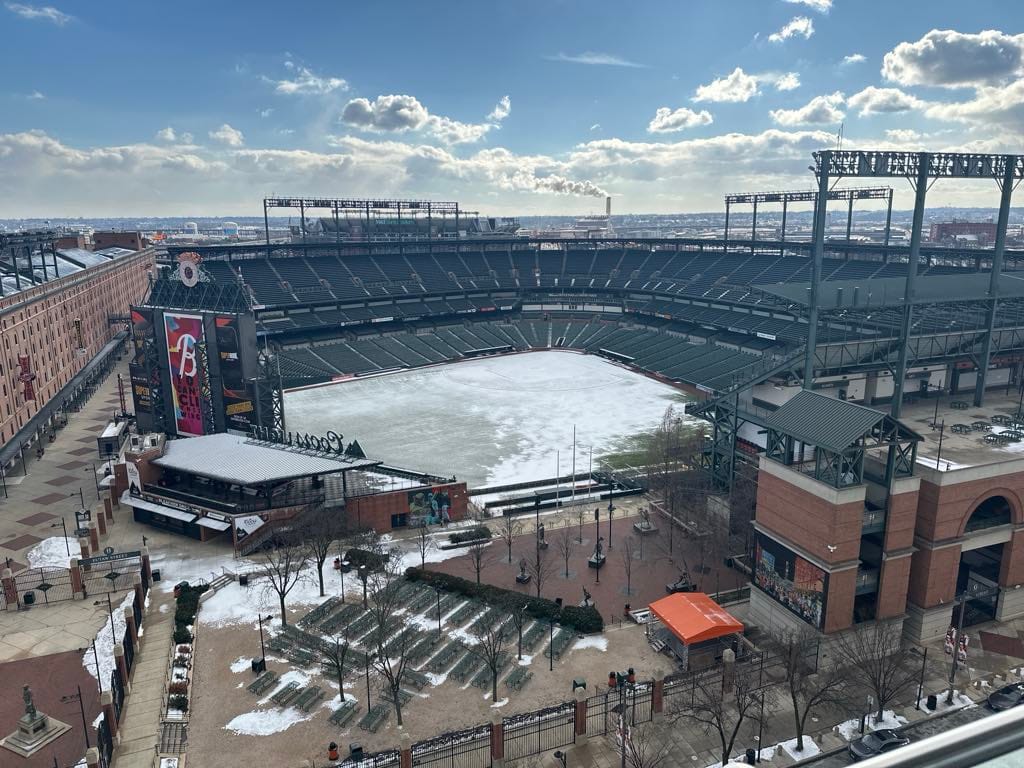
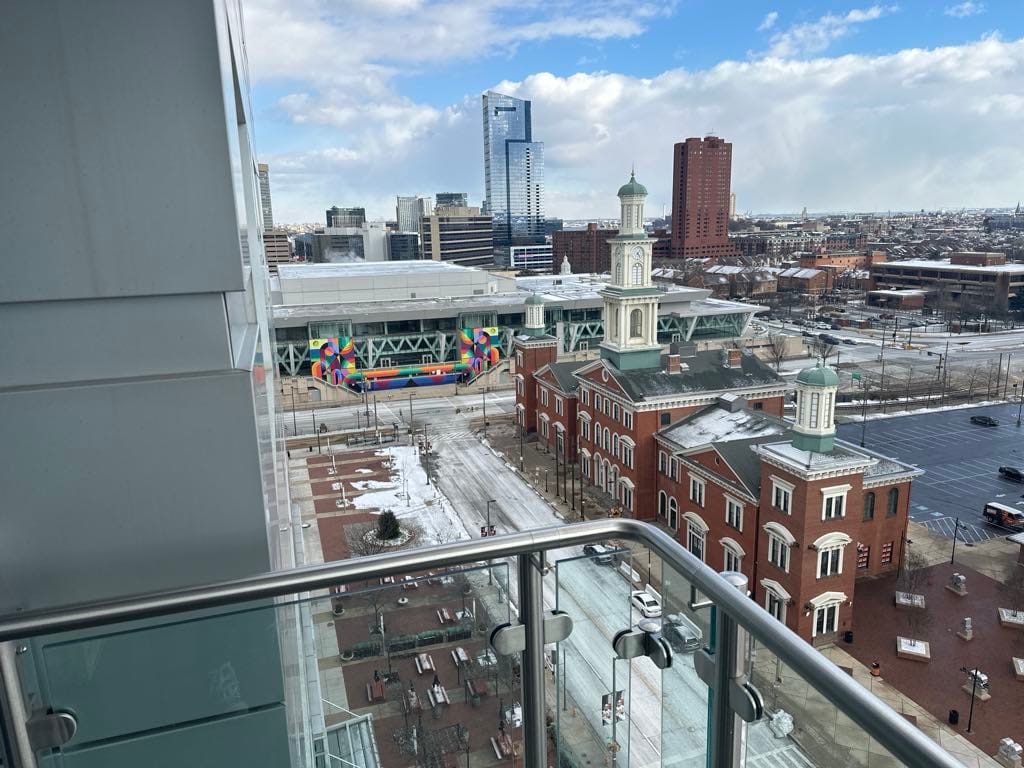
The view from the balcony at my chosen hotel room in Baltimore, to the left the Convention Center, and straight in front of me, baseball.
In Chicago we would be split between two hotels; Hyatt Regency McCormick and Marriott Marquis. Both of these are connected to the convention center via covered, and heated, walkways, which is a huge important thing because of those February dates. I loved both of these hotels, the rooms are stellar; clean, properly lit, hella comfortable. The Marriott is further from Lakeside Center (the convention space we would be using) and was about a fifteen minute walk. The Hyatt was $201 plus tax ($269 a night) in year one, with annual escalators, and the Marriott was $224 plus taxes in all three years. It stayed more expensive than the Hyatt in all three years, as the Hyatt escalators were very small.
In Minneapolis we would split across six hotels; Millennium Minneapolis, Holiday Inn Express, Hilton Minneapolis, Hyatt Regency, Hyatt Centric, and Royal Sonesta. We toured Hilton and Hyatt, and saw pictures of Royal Sonesta (via Powerpoint, it's being remodeled), and I have to be kind of mean here, I thought they were gross. My room had weird stains on the wall and a terrible mattress. It was all a weird yellow color that made me uncomfortable to look at. It was weird because the lobbies were stunning, but the rooms (and hallways) were terrible. It was pointed out by another of our attendees that the hallways in one hotel were very poorly designed, with tons of blind corners for people to hide in, and very bad lighting down the hallways that made them feel unsafe to walk down. Room rates in the first year would be between $214 plus tax ($249.89) and $232 plus tax ($263.22).
I probably book rooms outside of our room block in this town, unless we add The Ivy or The W to the room block, this room block is thoroughly 'meh' to me, not benefitting from better location, or better amenities, than anything else I could find in this town.
When it came to hotels, our room blocks were really best in Chicago, it's the place that gives us the most campus-like feel, which I really do miss. I loved both hotels in Chicago, and several hotels in Baltimore, and none of the hotels in Minneapolis. If we only cared about our hotel rooms I'd rank the cities Chicago, Baltimore, then Minneapolis, but we don't only care about hotels, do we?
Let's talk about convention centers!
Let's start by answering some quick questions. At all three convention centers there were easily accessible and clearly marked gender neutral restrooms. All three convention centers had tons of women's restrooms (I was asked to check both of these things by retail colleagues, and I live to serve.) All three convention centers had robust DEI programs that they talked to us about during the presentations (I do not know if we mentioned that this mattered to us, if they did some research, or they just give that pitch to everyone). Side note, Baltimore referred to their programs as IDEA (Inclusion, Diversity, Equity, Access) which I had not heard before, and I liked it.
The Baltimore Convention Center offers us 215,000 square feet of exhibit space, with 85,000 additional square feet to grow into. I believe that we'll have grown into that in year one, so let's call it 300,000 square feet. This is exactly what Hall D at Lakeside Center (Chicago) offers us, and Lakeside Center also has Hall E, a 283,000 square foot space downstairs that we have included in the contract. In the early years it could be used as storage space, staging space, or maybe even meeting rooms, and if we needed the exhibit space we could use it in future years for that. Minneapolis contract includes 199,000 square feet in year one, growing to 277,000 in year three. That's the amount of space, but let's talk about the space.
In Baltimore, the space is below-ground. It has huge high ceilings, and I may have joked that it felt a little bit like a nuclear fallout shelter. This was because it was (at that time) a giant empty cavern of concrete and low-lights (no sense wasting electricity on empty space). It felt like I could park a couple of triple sevens in there with space to spare.
In Chicago, Hall D has natural lighting. Can you imagine, an exhibit hall where natural light enters the building!?! Of course, it's Chicago, so there is little natural light in February. There was just a major electronics convention in Chicago before we arrived, so there are heavy black curtains covering the poor windows.
If you have never seen the exhibit space at Minneapolis Convention Center you're missing something pretty nifty. The exhibit hall has four domed sections, and as domes produce pressure both downward and outward, a properly built dome doesn't need to have the huge pillars that hold up most exhibit halls, so the saucer-style domes here create huge open spaces in the exhibit hall itself (and they're really pretty at night when they're all lit up outside).

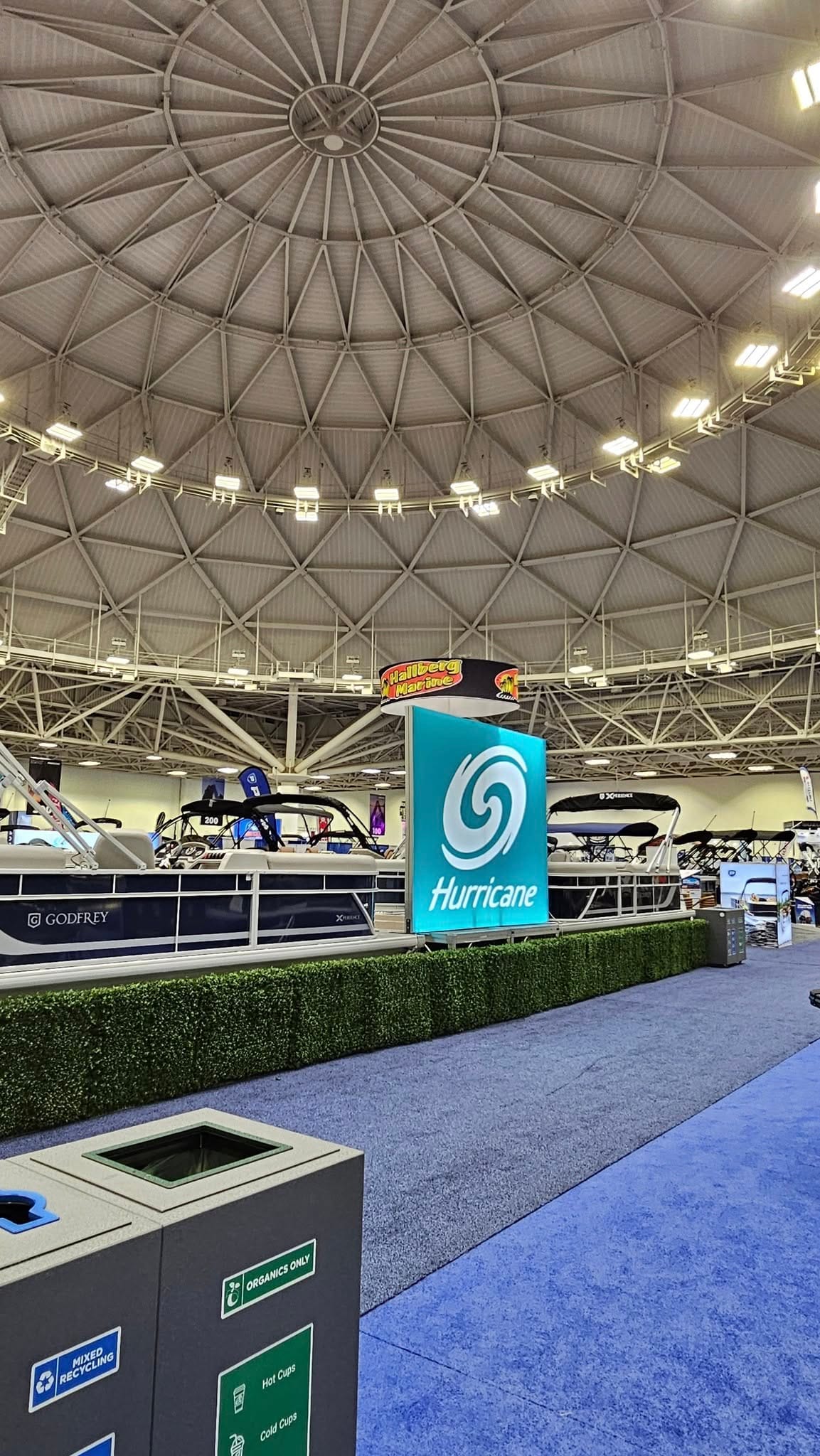
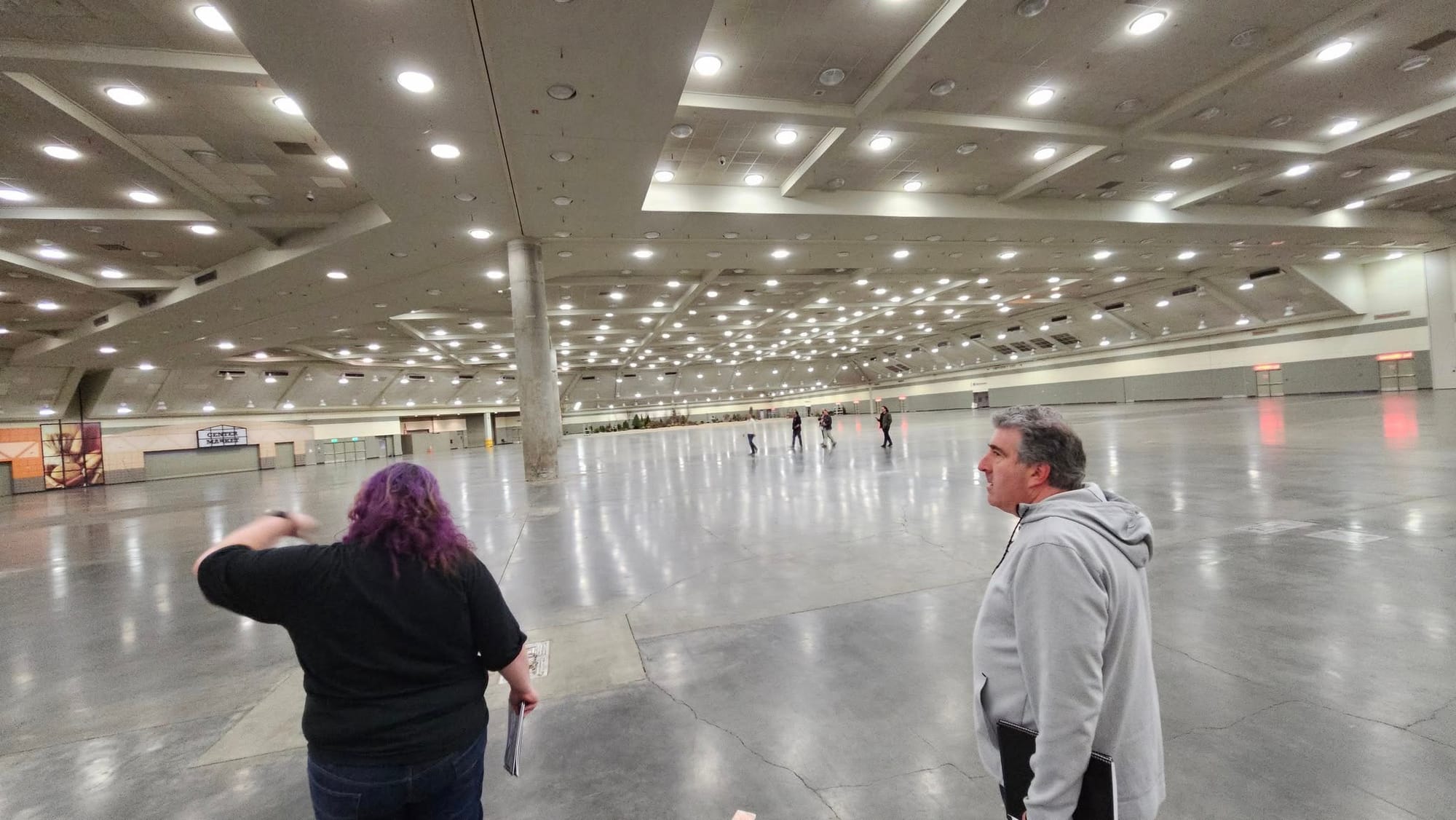
Chicago, MSP, and Baltimore Exhibit Halls (MSP and BLT photos by John Stacy via Facebook)
Then there are meeting rooms, right? We like meeting rooms, we use them to teach classes, and some companies rent them as office space during the show. Baltimore has the fewest of these rooms, only 35, which matches what we have in Kentucky. Both Chicago and Minneapolis had 40 meeting rooms, which is nice, because I attended some creator seminars this year, and it would be pretty neat if creator seminars could get some classroom space instead of being held in their gaming space (hearing presenters was a challenge sometimes). The only negative with the Chicago meeting rooms is that they were spread across four floors, which could make rapidly moving from one class to another challenging. Overall, a meeting room is a meeting room for me, if they have chairs that's nice, and if they a writing surface that's really nice, but now I'm getting greedy.
Oh yes, we need ballrooms! We use ballroom space for game nights, for registration, and for the occasional reception or meeting. Baltimore has a 36,000 square foot ballroom near the meeting rooms, a great space for game night. It also has a decent amount of pre-function space outside that ballroom. Chicago has a 44,500 square ballroom that is a lie. It's also the pre-function space outside the exhibit hall, so we would be using airwalls to create a separate ballroom for game night (about 28,000) on the Lake Michigan side, and a registration/pre-function space outside the exhibit hall of about 22,000. It's plenty of space, but having to put up an airwall utterly ruins the amazing view (which would mostly be of fog and a frozen lake, but still neat). Minneapolis has a great 27,000 square foot ballroom space with a permanent stage (the theatre nerd in me was geeked). This was also near the auditorium, which we need to discuss, so let's talk about additional space.
In Baltimore there is a 10,000 square networking space, plus some additional meeting spaces and networking spaces split between the hotels and convention center. The Lord Baltimore has a stunning ballroom (not currently in the proposal) that I can imagine some publisher (or TCGPlayer) jumping on to host a stellar party. The Hilton has an indoor-outdoor function space that directly across from Oriole Park at Camden Yard, with a neat view of their statue garden.
Chicago has a 7,500 square foot networking cafe, a 4,000 seat auditorium we could add to the contract (but has issues, like you need to hire union ticket-takers to unlock the damn thing, even if you're not holding a ticketed event), and a dock, in case you want to grab an ice-cutter to Navy Pier in February. (Yes, I'm going to keep whining about February in Chicago).
Oh Minneapolis. As much as I hated your hotels I loved this convention center. There is a 3,400 seat auditorium (again, theatre nerd was geeked) where the seating at the back of the auditorium is made up of three rotating pods. Each pod seats about 400 people and is an independent room of its own, so we could put 3,400 people in one room for a keynote, then rotate those pods around and have one room of about 2,100 people, and three rooms for about 400 people. I imagine some companies would be stoked by that kind of presentation space. The MSP Convention Center also has three beautiful towers with these gorgeous round, window-covered, reception areas. They range from about 1,000 to 2,500 square feet and would be great spaces for sponsors to hold receptions or meetings.
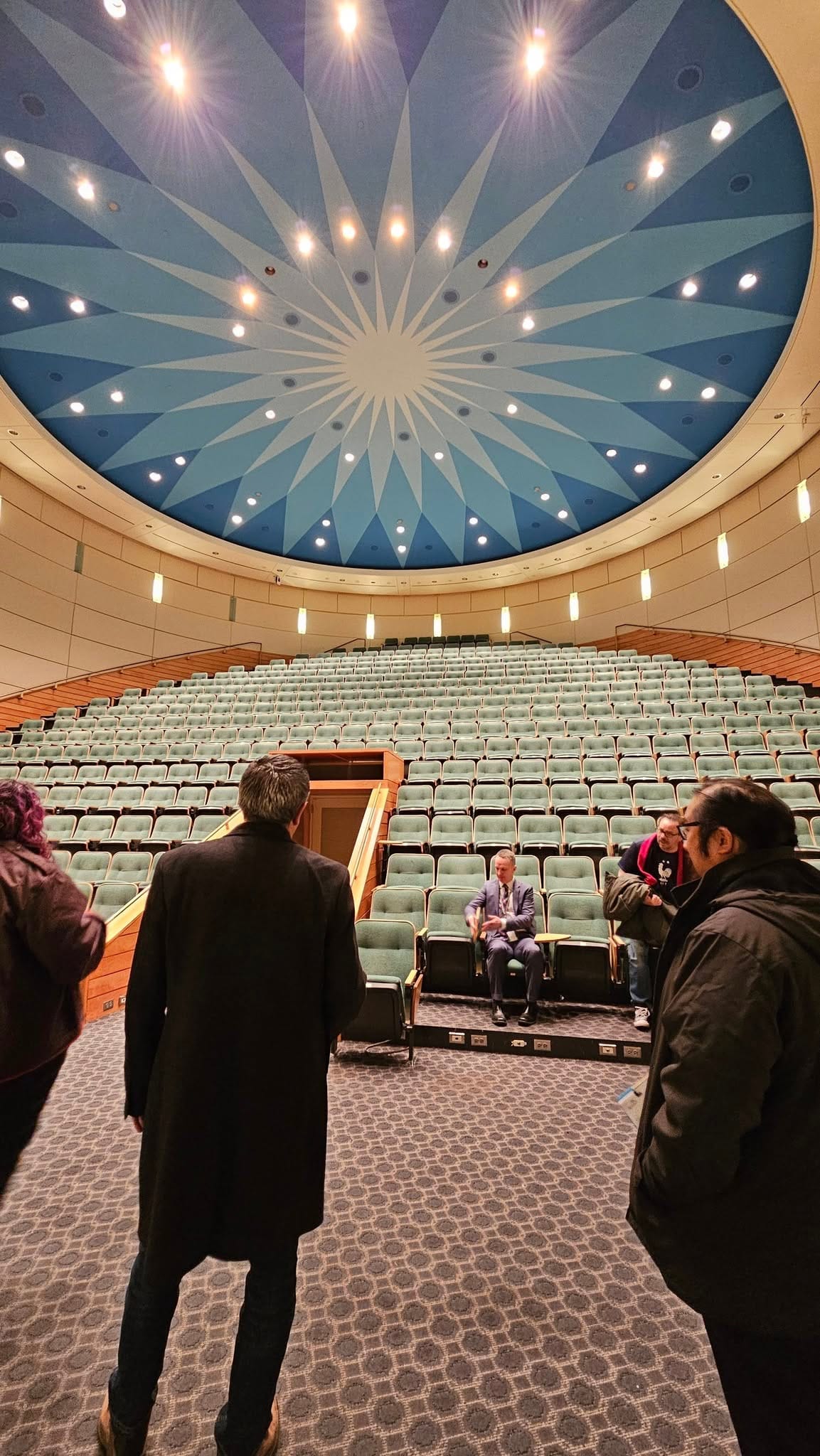
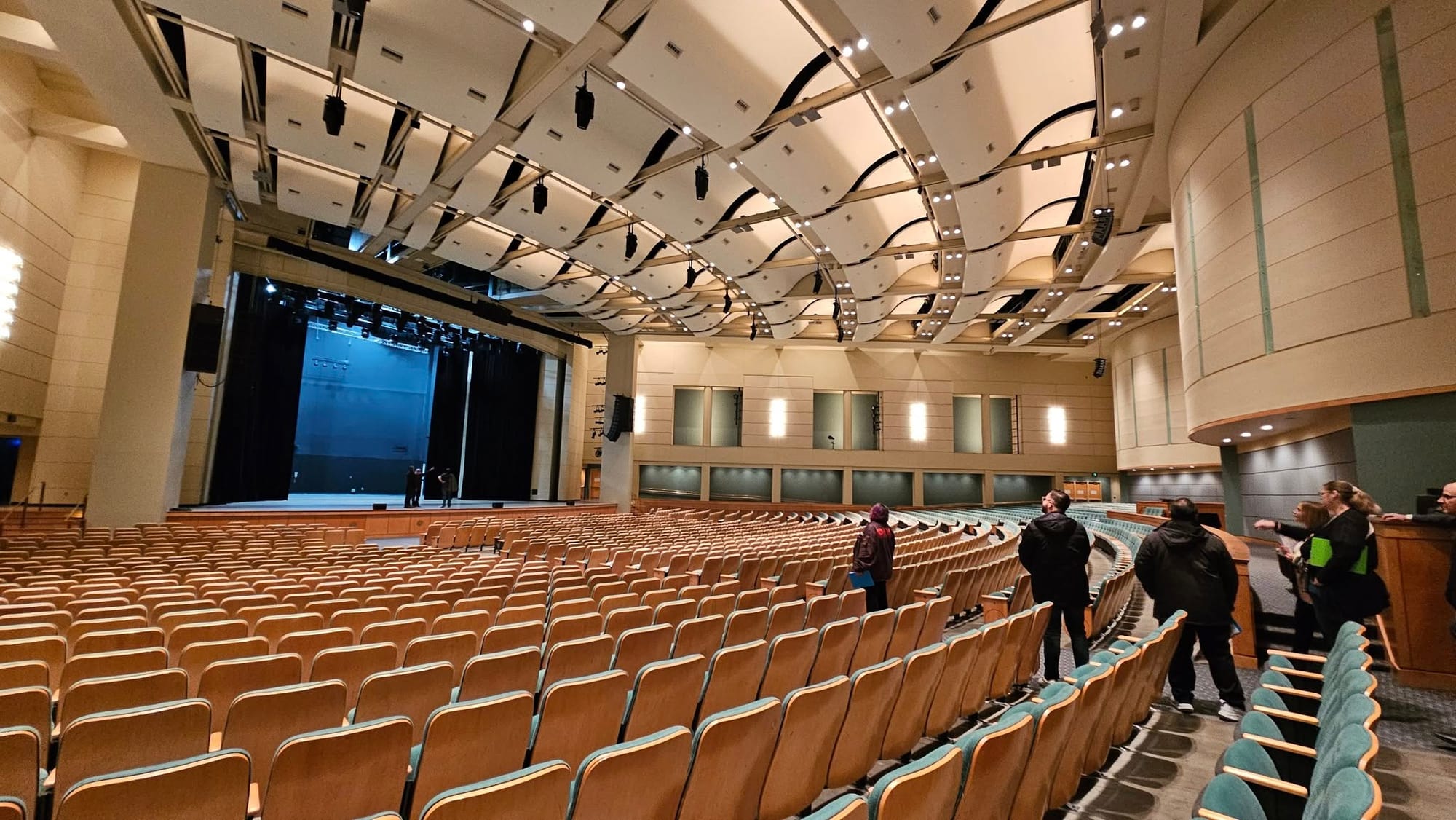
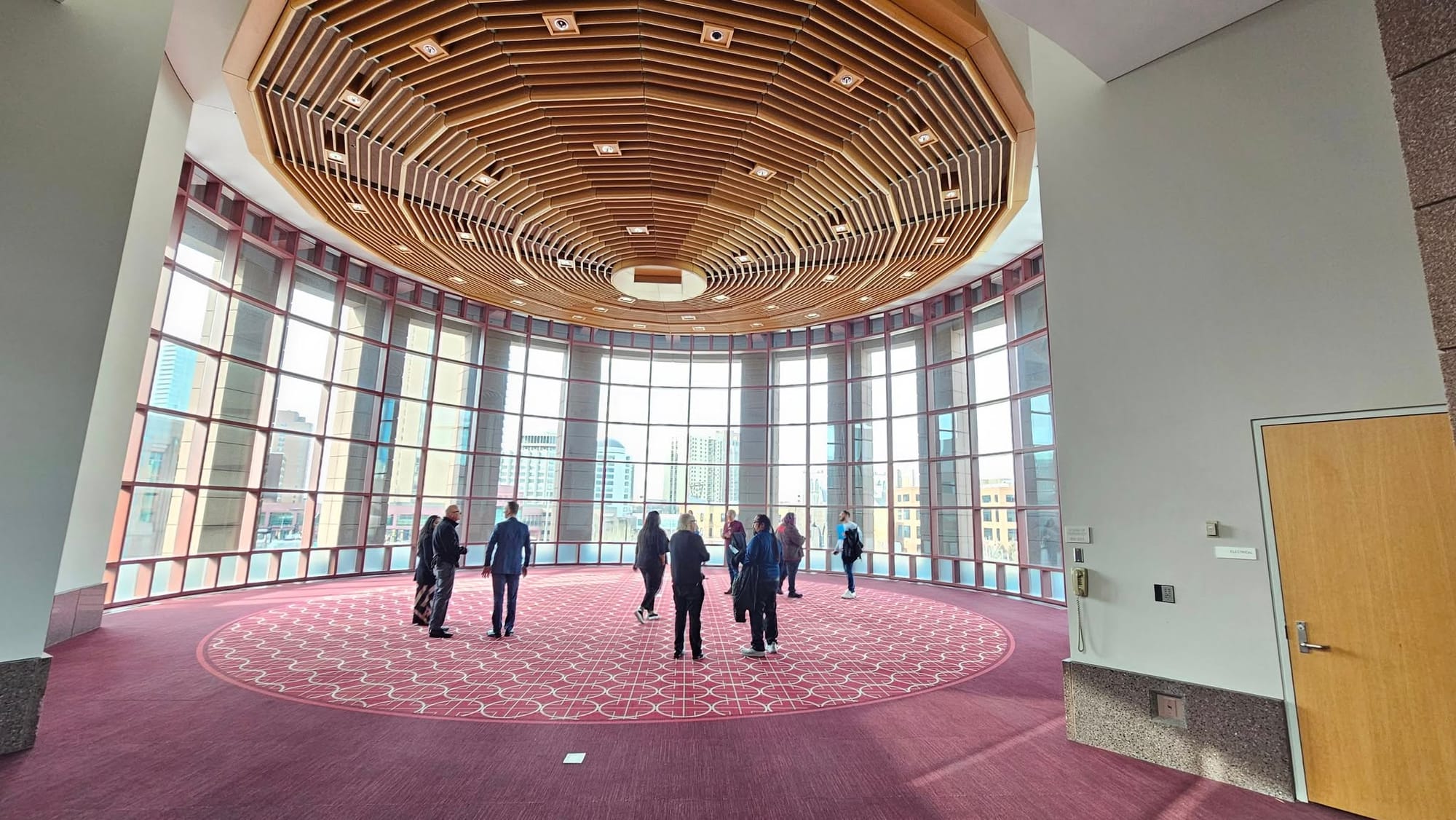
Classroom, auditorium, and round reception area - all in Minneapolis. (All three photos from John Stacy via Facebook.)
If we were picking a city based only on the convention center, Minneapolis is the hands down winner for me.
But we're not.
I've covered hotels and convention centers so far, so what's left? I still want to talk to you about food, because a great experience comes with great food. I also want to talk to you about getting to the convention, because planes, trains, and automobiles are a thing. I finally want to talk to you about dollar dollar bills, ya'll, because GAMA doesn't have an unlimited supply of those.
But, we're well over 2,500 words, so I've made of myself someone who can't do this in three parts. Part four will arrive later this week, as well the announcement of a permanent writing schedule. In Part four we'll talk about the list above, and we'll dive into the brain of Andrew Zorowitz, who has given me permission to share all of his research...and I do mean HIS research, because Andrew's brain works in a fashion I had never understood before this trip, and I learned lots of new words and concepts, so we'll talk drayage, self-unloading, union loaders, electric rates, rigging rates, pallet shipping rates, and so much more!
If you're keeping score, Chicago won hotels (Baltimore second), and Minneapolis won convention center (Baltimore second, because of my concerns about classrooms being spread across four floors). Who shall win the rest? Find out on Friday!